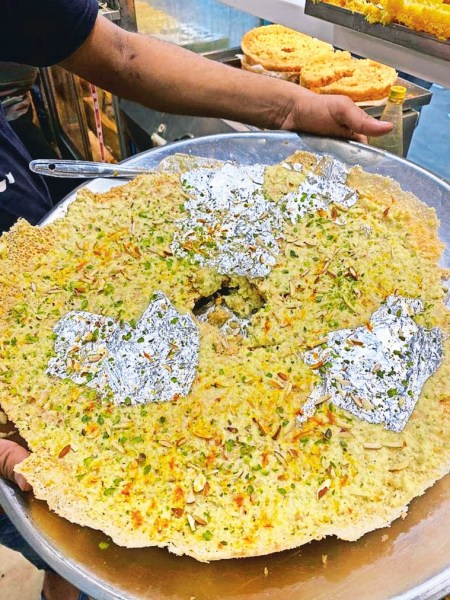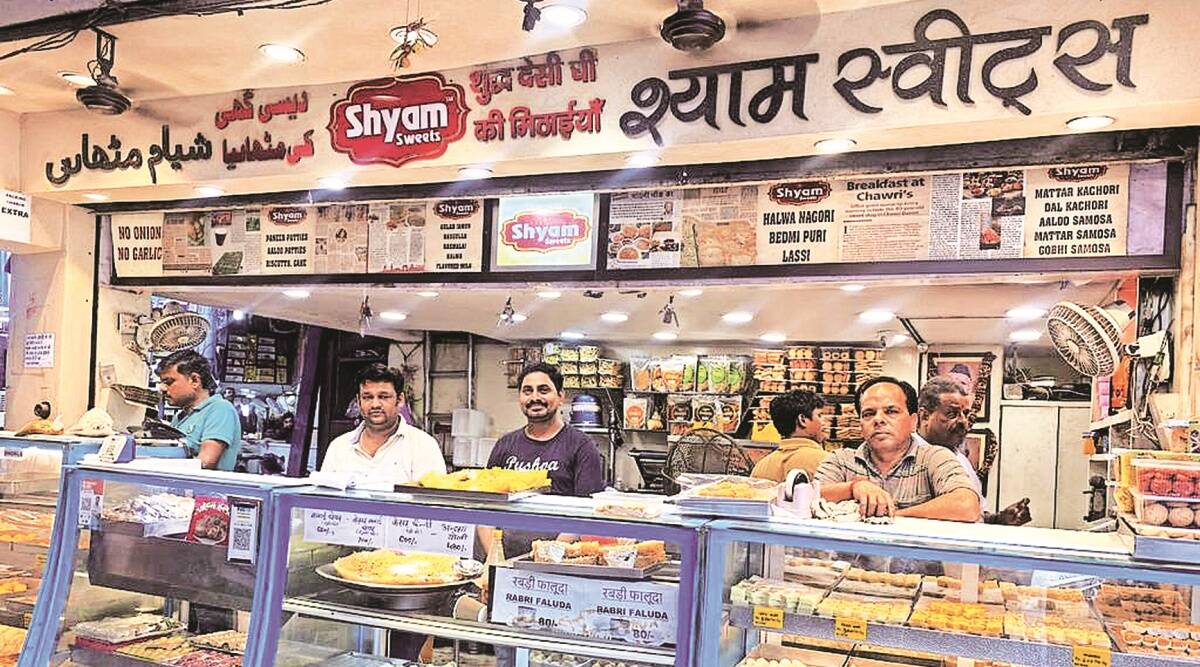[ad_1]
Did you know that the sweets of Purani Dilli were once used like morse codes, their boxes used to convey messages to our freedom fighters, each sweet an indicator of either a bomb attack, an agitation or simply a command to sleeper revolutionaries to prepare for action against the British Raj? Not just that, some sweetmeat shops became hideouts for young revolutionaries, who could easily disguise themselves as kitchen hands, hold secret meetings and get a constant supply of food unnoticed. A box of laddoos meant bombs were landing, a box of Bengal rosogollas meant a big consignment of explosives, while barfis meant cartridges and ammunition were on the way.
“Unfortunately, these stories have passed into our oral histories and nobody has compiled them together. But our freedom fighters were only following tactics followed by French revolutionaries, who hid in bakeries and loaded up on bread that would sustain them while they were on the run. Bengal, Punjab and Maharashtra were the focal points of our freedom movement and coincidentally these were all sweetmeat hubs. So naturally exchanging sweets became a subterranean mode of communication,” food anthropologist and chef Sabyasachi Gorai said.
“There were two reasons. First, the British fell in love with Indian sweets and given their popularity and open distribution during pujas and festivals, would least suspect that they could be used as a mode of communication. They would hardly open a box to see the scribbled messages. Second, the mithai shops were hardly raided, becoming safe houses for freedom fighters to meet and pass on the message to the next hideout like a relay race. Since the British had banned public gatherings, the buzz around sweet shops helped freedom fighters blend in easily. Several accounts mention how Chandrashekhar Azad and Bhagat Singh would move around Matia Mahal at night for kulhad chai and head to Ghantewala for puri-aloo and halwa. Of course, that shop has shut now. The fact that the imperial soldiers conducted major demolitions and cleared trees and undergrowth at the time showed that they were trying to smoke the revolutionaries out,” he said.
 Its sixth generation scion, 31-year-old Bharat Agarwal, said: “With the Raj came new businesses and contractors. A lot of Marwari businessmen then settled in these parts and got the ghevar (disc-shaped sweet cake made of besan, ghee, milk and soaked in sugar syrup). Nothing is recorded of the freedom fighters at our shop as such but yes there has been a tradition of high-calorie sweets that can last a long time.
Its sixth generation scion, 31-year-old Bharat Agarwal, said: “With the Raj came new businesses and contractors. A lot of Marwari businessmen then settled in these parts and got the ghevar (disc-shaped sweet cake made of besan, ghee, milk and soaked in sugar syrup). Nothing is recorded of the freedom fighters at our shop as such but yes there has been a tradition of high-calorie sweets that can last a long time.
“Sweets were high-calorie and energy-giving. So, if you look back at those times, you will find that these shops were making pinnis, roundels of desi ghee, whole wheat flour, jaggery, almonds and raisins, sometimes even with urad dal paste to lend protein value. These could last a long time and were preferred as the travellers’ food,” said Gorai. “The interesting thing about motichoor ladoos were a few coloured boondi dots. If you joined the dots, you could make out a map of an area. Only the trained eye would understand their worth. A regular buyer would just think of it as an attractive presentation. And if a consignment were to come from Bengal, couriers would carry rosogollas, placing them in water pitchers to last the long train journeys, to indicate the arms were on the way and revolutionaries should regroup to receive them.”
Shyam Sweets, which came up in 1910 at Chawri Bazaar with the shifting of the imperial capital, has lived through these turbulent times. Its sixth generation scion, 31-year-old Bharat Agarwal, said: “With the Raj came new businesses and contractors. A lot of Marwari businessmen then settled in these parts and got the ghevar (disc-shaped sweet cake made of besan, ghee, milk and soaked in sugar syrup). Nothing is recorded of the freedom fighters at our shop as such but yes there has been a tradition of high-calorie sweets that can last a long time. Often ghevars would be dipped in sugar syrup just before eating so that it could be preserved for a longer time.
Or topped with rabri and nuts. In fact, we have embellished it much later. There is no record of what we made on Independence Day because elders say soon after the declaration, a lot of rioting started in Old Delhi. But surely in an independent India, and maybe around Diwali that year, we decided to increase the size of our ghevars.”
In the early years, they didn’t depend on milk as much considering it would go bad in the heat without refrigeration. “Before Independence, the emphasis was on rolling out sweets which had a long shelf life. There
wasn’t much variety and we restricted ourselves to boondi, chota rasgullas, petha (white pumpkin candy) and lauki (bottle gourd) barfis. In the early 1950s, Bengali civil service officers brought their families and settled here. That’s when we started making sandesh, something which we started preparing consistently since the 1970s as the number of settlers increased,” said Agarwal.

We do not know if the revolutionaries ever stopped at Kanwarji, which stands at the head of Parathewali Gali, but the legacy of its food-on-the-go proves that it catered not only to them but also the working class who had come in droves from various parts of the country to build the new capital. It created the Dalbiji, a crunchy mix of besan sev, lentils, musk melon seeds and a blast of spices that continues to be a family secret. But Sheeren Bhawan, at Chitli Qabar, Jama Masjid, reminds you why a healthy dessert was the Delhiite’s obsession about 80 to 90 years ago. Its sixth generation flagbearer, Ahmar Shiraz, will tell you that hakims were consulted to curate a whole range of halwas. Known for their white gajar halwa, made out of specially grown white carrots, they add cloves and saffron in ghee and milk to fight the harsh winters. Maybe the jaggery sherbet, now only available at Pahadi Imli, was invented to revive and nourish the tired young men and women, constantly dodging British law-keepers through the maze of Old Delhi.
[ad_2]
Source link

